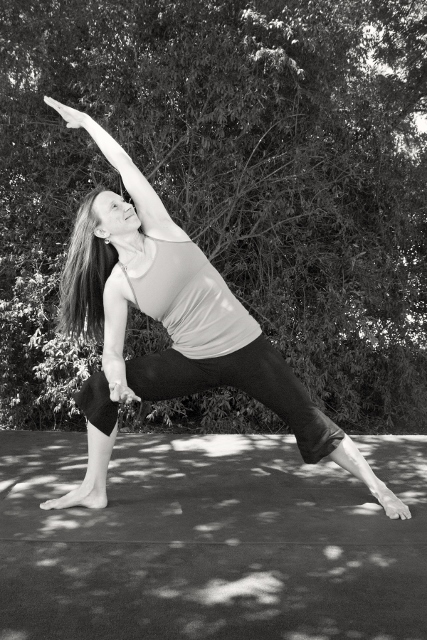
Wellspring Centre Certified Yoga Therapist Abby Hatfield
Guest Post by Wellspring Centre Yoga Therapist Abigail Hatfield
I recently read an article that highlights insights from neuroscience that are applicable to the practices of yoga and meditation. (You can read the article in its entirety here: The brain is wider than the sky: integrating insights of neuroscience with Hatha Yoga). Our understanding of the brain provides a scientific basis for many of the meditative practices that have been taught for centuries. In particular, the study of neuroplasticity, or the brain’s ability to form and reorganize connections, makes the case for sustained practice of mind/body disciplines. These disciplines can reinforce intelligent, conscious, and healthy actions and behaviors in response to challenges in our environment. Mirriam-Webster defines mindfulness as “the practice of maintaining a nonjudgmental state of heightened or complete awareness of one’s thoughts, emotions, or experiences on a moment-to-moment basis”. So, how do we do it? One answer: Practice!
The word asana in yoga usually translates as a particular position or posture. However, the word can also be translated as “a manner of sitting”. I often invite students to explore how they “take their seat”, or “noticing what is in their awareness” as they begin their practice. When we set the intention to fully arrive in the present moment, we are beginning to employ mindfulness. However, paying attention to what is present is not something that is isolated to yoga practice. When we receive bodywork, such as massage or chiropractic, we also have an opportunity to become mindful. The more we practice staying present, rather than being swept away with the thoughts that continuously bombard us, the more we can create a new pattern of relaxation. We can observe the cycling of thoughts and emotions in our chiropractic, massage, or yoga sessions, without our experience being overwhelmed by them. For example, if there is an acute area of tension noticed in a session, a thought may emerge related to the cause of that tension, or the future implications of the injury. Observing the thought, then returning to the present moment, feeling the breath, and keeping the mind engaged with the healing process that is occurring in the moment can allow healing to occur more rapidly.
Mindful yoga practice allows us to repeat the process of noticing sensation and instilling a sense of calm by feeling the breath. When this process is done frequently, the practitioner can repeat the process with greater ease and efficiency. Then the practice can be accessible when we need it in other challenging areas of life. When we are confronted with something stressful, we can access this well-practiced neural pathway that knows how to notice, feel, breathe, and relax. As a yoga therapist specializing in chronic pain, re-patterning the client’s response to sensation is critical. I encourage clients to actually “go into” and explore the difficult sensations. The willingness to “take your seat” within the sensation provides an opportunity to use the skills of mindful breath and awareness to re-pattern the anxiety/stress response that habitually arises.
The mind has limitless potential to affect our health and well-being. Make the most of your yoga, massage or chiropractic sessions by setting intention, employing mindfulness, and practice creating new pathways for the brain and body to work together on your journey toward healing.
